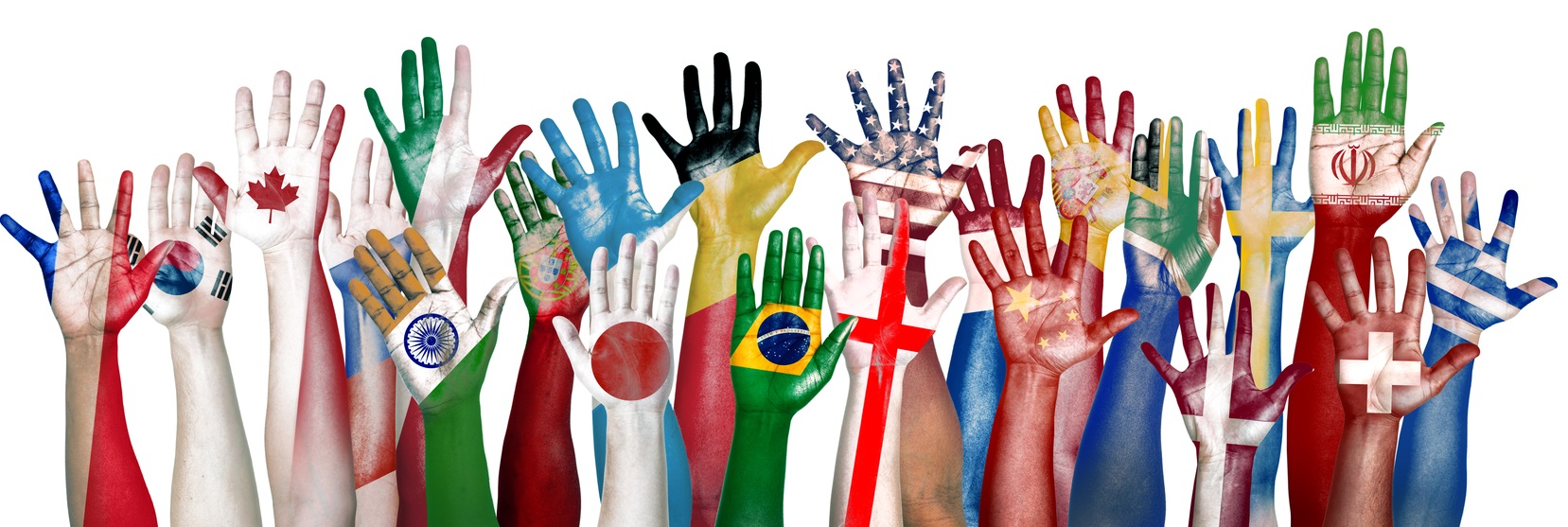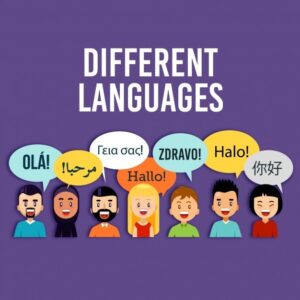Sign language is a rich and dynamic form of communication that transcends spoken language, allowing millions of individuals to connect and express themselves in a distinctive manner through non-verbal communication and gestures.
Originating from diverse cultural backgrounds and historical contexts, sign language has undergone significant evolution over time, resulting in various sign language systems and regional variations across the globe.
This article examines the development and differences in sign language among different countries, its benefits for both the Deaf community and broader society, as well as the common misconceptions that frequently arise regarding this form of communication and the impact of cultural differences.
We invite you to explore the essential role that sign language plays in promoting inclusivity, cultural significance, and celebrating Deaf culture.
What Is Sign Language?
.jpg_00.jpeg)
Sign language is a sophisticated visual language that functions as an essential means of communication, particularly within deaf communities globally. It comprises various regional dialects and gestures, enabling expressive language, receptive language, and fostering social interaction among individuals.
Sign languages, including American Sign Language (ASL), British Sign Language (BSL), and Indian Sign Language (ISL), exemplify the linguistic diversity and cultural identity of their respective regions.
This highlights the significance of communication access and inclusion for deaf individuals.
How Did Sign Language Develop?
The development of sign language represents a significant journey that illustrates the evolution of communication among individuals who are deaf, shaped by cultural heritage, linguistic relativity, and societal attitudes towards deafness.
This evolution can be traced to early forms of manual communication, which have progressively adapted to incorporate unique linguistic features, semantics, and syntax.
Ultimately, this process has culminated in the establishment of standardized sign languages, or signing systems, that effectively serve various communities through social integration and language standardization.
What Are the Origins of Sign Language?
The origins of sign language can be traced to various forms of manual communication that developed independently across different cultures, thereby illustrating the linguistic diversity and cultural practices found within deaf communities.
Initial gestures and visual-spatial languages emerged as means of expression, eventually leading to the formalization of distinct sign languages that encapsulate the rich cultural heritage of deaf culture.
From early indigenous gestures to the nuanced methods of communication prevalent in regional dialects, the evolution of sign language reflects the identities of its users. Each community has integrated its unique cultural characteristics into the signs, resulting in a diverse array of languages that not only facilitate communication but also serve as essential representations of community identity.
This evolution underscores the significance of preserving these languages as vital forms of cultural expression, ensuring that the intricate histories and experiences of deaf individuals are acknowledged and celebrated as integral components of their broader social and community identity.
How Has Sign Language Evolved Over Time?
Over time, sign language has undergone significant evolution, shaped by factors such as globalization, social norms, and the pursuit of linguistic accessibility. This evolution is characterized by the emergence of regional dialects and variations, highlighting the richness of visual languages and their cultural importance for deaf individuals in terms of language development and cultural exchange.
Technological advancements have played a crucial role in facilitating real-time communication among sign language users from diverse regions. This has enhanced the language’s iconicity and allowed for the incorporation of contemporary elements, promoting multilingualism and global perspectives that resonate with younger generations.
In academic contexts, the integration of phonetics, morphology, and pragmatics into sign language studies has deepened the understanding of its structure and function, thereby promoting further research and the development of educational resources.
Additionally, cultural exchange initiatives have contributed to this evolution by blending traditional signs with modern expressions, resulting in a dynamic tapestry of communication that continues to evolve and expand.
What Are the Differences in Sign Language Across Countries?
Sign languages exhibit considerable variation across different countries, with each developing a distinctive system of signs, gestures, syntax, and semantics that reflects the cultural nuances and social contexts of its users.
This linguistic diversity is exemplified by prominent sign languages such as American Sign Language (ASL), British Sign Language (BSL), and Indian Sign Language (ISL). These languages not only function as effective means of communication but also represent the cultural identity of their respective deaf communities.
What Are the Different Sign Language Systems Used in Different Countries?
Different countries employ various sign language systems, each characterized by unique features and structures, such as American Sign Language (ASL), British Sign Language (BSL), and Indian Sign Language (ISL). The emergence of International Sign has facilitated communication across national boundaries, thereby enhancing cross-cultural understanding among deaf individuals globally.
These sign languages possess distinct syntax, morphology, phonology, and phonetic elements, which differentiate them from one another as well as from spoken languages. For instance, the structure of ASL relies significantly on spatial grammar and facial expressions, which are vital for conveying meaning effectively. In contrast, BSL utilizes specific handshapes and movements to articulate various concepts.
Understanding these unique characteristics is crucial for implementing effective educational practices, as they influence how deaf individuals learn and engage with their communities. This underscores the importance of interpretative practices and supports the concept of bilingualism, which enables proficient communication in both sign and spoken languages, thereby enhancing accessibility, access, and opportunities for the deaf community.
How Do Cultural Differences Impact Sign Language?
.jpg_01.jpeg)
Cultural differences significantly influence the development and utilization of sign language, impacting the social norms and practices that shape communication within deaf communities. These variations underscore the importance of cultural sensitivity in comprehending and valuing the distinct characteristics of each sign language, as they reflect the identity and cultural heritage of their users.
Within diverse cultural contexts, sign language evolves not merely as a means of communication but also as a vital expression of community identity. An analysis of sign languages through the lens of linguistic anthropology and ethnography reveals the intricate relationship between language and cultural practices, which informs the interpretative frameworks utilized by speakers.
Community engagement is essential, as active participation cultivates a sense of belonging and promotes advocacy for social justice. Through these collective experiences, the deaf community navigates identity politics, asserting their rights, deaf rights, and visibility within broader societal structures. This dynamic interplay between culture and language ultimately enriches the tapestry of human expression and discourse analysis.
What Are the Benefits of Learning Sign Language?
Learning sign language provides numerous benefits, extending beyond deaf individuals to include hearing individuals as well, promoting language acquisition, and communicative competence.
It promotes inclusivity, enhances communication access, and fosters a deeper understanding of deaf culture and cultural transmission.
Proficiency in sign language serves to bridge communication gaps and facilitates social interaction, thereby contributing to community cohesion, enhancing cross-cultural communication, and enriching cultural exchange.
How Does Learning Sign Language Promote Inclusivity?
Learning sign language plays a crucial role in promoting inclusivity within society by dismantling communication barriers and fostering understanding between deaf and hearing individuals. This inclusivity is vital for social justice, as it empowers deaf individuals to express their identities and fully engage in various aspects of community life, supporting language identity and social constructs.
The incorporation of sign language into daily interactions can significantly enhance cultural exchange, enabling diverse communities to appreciate one another’s unique perspectives and experiences. When sign language is embraced, it not only enriches communication methods but also encourages a transformation in social norms, resulting in greater acceptance and representation of individuals from all backgrounds, enhancing cultural representation.
By prioritizing accessibility through sign language, communities actively contribute to their development, fostering an environment in which all individuals feel valued and included, irrespective of their hearing abilities, thereby promoting linguistic equality and awareness campaigns.
How Does Sign Language Benefit the Deaf Community?
Sign language offers significant benefits to the deaf community by providing an effective means of communication, preserving cultural heritage, and fostering a sense of belonging among its members. The use of sign language enhances the ability of deaf individuals to engage in social interactions, thereby strengthening community ties, promoting cultural identity, and supporting communication strategies.
Along with facilitating communication, sign language plays a crucial role in education, enabling access to learning opportunities that are essential for cognitive development and personal growth. In educational environments that embrace this form of linguistic diversity, students can engage fully with the curriculum, benefiting from deaf education and integration challenges, and express their ideas openly, fostering an atmosphere where the expression of identity is celebrated.
Sign language communities also frequently organize social events and activities that encourage collaboration and unity, allowing members to forge lasting relationships and develop leadership skills. Ultimately, these elements contribute to a richer cultural fabric, in which each individual’s unique experiences and perspectives are recognized and valued.
What Are Some Common Misconceptions About Sign Language?
The misconception that sign language is merely a series of gestures fails to acknowledge its complexity as a visual-spatial modality involving phonology, morphology, and syntax.
Despite its importance, there are several prevalent misconceptions regarding sign language, including the notion that it is a universal language comprehensible to all deaf individuals, irrespective of their cultural backgrounds. This highlights the linguistic diversity and regional variations that exist within different signing systems, each with its own syntax and semantics.
In truth, the diversity of sign languages reflects the intricate linguistic characteristics and cultural identities inherent within each system. Sign language interpretation services play a crucial role in bridging communication gaps, enhancing accessibility for deaf individuals, and promoting global perspectives on language and culture.
Is Sign Language Universal?
It is a common misconception that sign language is universal; however, in reality, sign languages exhibit significant variation across different regions and cultures, reflecting the linguistic diversity present within the deaf community. Each sign language possesses its own unique syntax, grammar, and vocabulary, which are influenced by the cultural contexts of the communities that utilize them.
Understanding this diversity is essential for promoting effective communication among deaf individuals and for appreciating their rich cultural heritage. For example, American Sign Language (ASL), British Sign Language (BSL), and Australian Sign Language (Auslan) are distinct languages, each characterized by unique signs and expressions. This further underscores the notion that sign languages are not merely gestural equivalents of spoken languages.
The misconception of a singular sign language fails to recognize the profound connections that exist among language, identity, and cultural preservation—elements that are integral to the deaf experience. Acknowledging these differences fosters respect for the diverse identities represented within the global deaf community and underscores the importance of allowing individuals to communicate fully in their native sign language.
Do All Deaf People Use Sign Language?
.jpg_10.jpeg)
Not all individuals who are deaf utilize sign language, as communication preferences can vary significantly based on factors such as educational background, cultural upbringing, and personal choice. Some deaf individuals may prefer auditory-visual integration methods or other forms of communication, which underscores the importance of inclusivity and the recognition of diverse communication modalities.
With advancements in assistive technology, such as speech-to-text applications and hearing aids, many members of the deaf community are increasingly embracing a combination of spoken language and visual signals, thereby fostering a greater connection with the hearing world.
This diversity reflects the rich tapestry of deaf culture, where community engagement is rooted in mutual understanding and respect for linguistic equality. By acknowledging these differences, society can cultivate more supportive environments that accommodate the various communication methods preferred by deaf individuals, ultimately give the power toing them to express themselves fully in all contexts.
What Is the Role of Sign Language in Deaf Culture?
Sign language plays a crucial role in deaf culture, serving as the primary mode of communication as well as an essential means for expressing identity and ensuring cultural continuity.
Through the utilization of sign language, deaf individuals cultivate community cohesion and establish a shared cultural experience that connects members of the deaf community across different regions. This sense of belonging is reinforced by the cultural practices in sign language that celebrate identity formation and social justice.
How Does Sign Language Connect Deaf Individuals to Their Culture?
Sign language serves as a crucial means of connection for deaf individuals to their culture by facilitating the expression of shared experiences, values, and traditions that characterize their community. This connection fosters a sense of belonging and strengthens cultural identity, enabling deaf individuals to convey their unique perspectives and narratives.
Through the utilization of this visual language, members of the deaf community can engage in significant cultural exchanges that transcend the barriers of spoken language. They actively contribute to the rich tapestry of their society, celebrating the traditions and customs that reinforce their collective identity.
By adopting sign language as an essential communication tool, deaf individuals not only enhance their understanding of their culture but also improve their social interactions. This enables them to forge meaningful connections that promote community engagement and collaboration.
Furthermore, this linguistic bridge empowers them to navigate issues related to identity politics and advocate for recognition and respect, thereby enriching their lives and those of others in their community. This advocacy is crucial for addressing social stigma and fostering social norms that support linguistic anthropology and community resources.
What Are Some Important Cultural Practices in the Deaf Community?
The deaf community possesses a rich array of cultural practices that celebrate its unique identity, including storytelling, visual arts, and social gatherings centered around sign language. These practices not only enhance community representation but also facilitate cultural exchange and inclusivity among deaf individuals and their hearing allies.
A vibrant tapestry of communication styles and artistic expressions reflects the shared experiences and values of individuals within this community. The art of storytelling, whether conveyed through traditional narratives or contemporary interpretations, serves to transmit history and wisdom. Additionally, visual arts provide a means of expression that transcends spoken language.
Social gatherings play a vital role in strengthening interpersonal connections, as they create environments for individuals to engage and share their experiences, ensuring that all members feel included and valued.
By participating in these cultural practices, the community preserves its heritage, reinforces social connectivity, and enhances the expression of identity, fostering a resilient environment in which all individuals can thrive. This contributes to language identity and the preservation of deaf heritage, encouraging multilingualism and bilingualism as part of community resources and communicative competence.
How Can People Learn Sign Language?
Individuals seeking to learn sign language can access a wide array of resources and educational programs designed to accommodate various learning styles and objectives, thereby promoting enhanced communication access and inclusivity.
These resources are instrumental in enabling individuals to acquire the necessary skills for effective communication with deaf individuals and to engage meaningfully with deaf culture. Awareness of language barriers and the importance of cultural representation enhances the learning experience and supports global perspectives on language comparison and evolution.
What Resources Are Available for Learning Sign Language?
A variety of resources are available for learning sign language, including online platforms, mobile applications, textbooks, and community classes tailored to different skill levels. These resources not only facilitate language acquisition but also promote community engagement and awareness of deaf culture.
For example, online platforms featuring video tutorials and interactive courses provide visual learning experiences, which make it easier to comprehend the unique communication modalities inherent to sign language.
Mobile applications are often equipped with features such as flashcards and practice quizzes that encourage repetition and retention, making them ideal for learners with mobile lifestyles.
Textbooks specifically designed for those interested in sign language include cultural notes and contextual illustrations, thereby fostering cultural sensitivity.
Participating in community classes offers hands-on practice and immerses learners in a supportive environment that enhances accessibility, ultimately leading to a richer and more informed learning experience.
What Are Some Tips for Learning Sign Language Effectively?
.jpg_11.jpeg)
To effectively learn sign language, individuals should implement practical strategies such as consistent practice, immersion in Deaf culture, and active engagement with Deaf communities to enhance their communicative competence. These approaches can significantly improve proficiency and foster a deeper understanding of the nuances of sign language.
Learners may also benefit from attending workshops and social events designed for the Deaf community, where they can interact with native signers and receive real-time feedback on their skills.
Additionally, utilizing online resources, such as instructional videos and interactive courses, can support flexible learning. Maintaining an open mind and being receptive to various regional signs and dialects contributes to the preservation of identity within the language.
It is important to recognize that expressive communication encompasses more than just mastering signs; it also involves understanding cultural contexts, fostering meaningful conversations, and developing authentic connections that extend beyond mere words.
Frequently Asked Questions
How does sign language differ across countries?
Sign language differs across countries due to cultural and linguistic differences. Each country has its own unique sign language that reflects the language and culture of its people.
What are some examples of sign language differences across countries?
For example, American Sign Language (ASL) is different from British Sign Language (BSL) in terms of vocabulary, grammar, and syntax. ASL uses one-handed signs, while BSL uses two-handed signs.
How does sign language reflect cultural importance?
Sign language is an integral part of a country’s culture and identity. It reflects the values, beliefs, and customs of the deaf community and provides a means of communication and self-expression.
Why is it important to understand the cultural differences in sign language?
Understanding the cultural differences in sign language allows for effective communication and promotes inclusivity and diversity within the deaf community. It also helps to avoid misunderstandings and fosters cultural awareness and sensitivity, highlighting the language’s cultural significance and visual-spatial modality.
How are sign languages influenced by spoken languages in different countries?
Sign languages are influenced by the spoken languages of the country in which they are used, reflecting linguistic diversity and the impact of cultural practices. This can be seen in the similarities between the signs and the spoken language’s grammar and syntax, as well as in regional variations like American Sign Language (ASL) and British Sign Language (BSL).
Is there a universal sign language that is used across all countries?
While there is no universal sign language, International Sign serves as a tool for cross-cultural communication among deaf individuals from different countries. These signing systems, however, are not standardized and vary depending on the individuals using them. This highlights the challenges of language standardization and the importance of promoting linguistic equality and multilingualism within global deaf communities.

My name is Bruno, I have been a writer for 5 years and I work with website creation. My goal is to provide true information to readers. In fact, on this site I write about cultures and traditions, which I have been passionate about since childhood.




